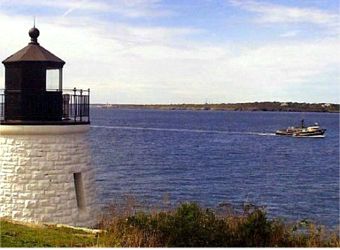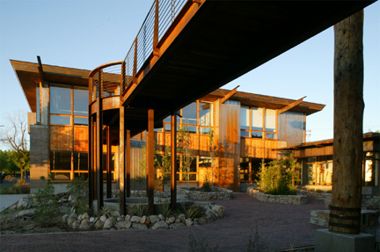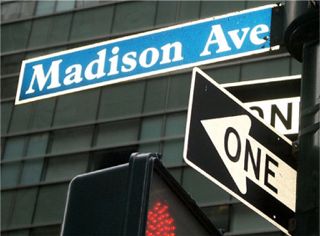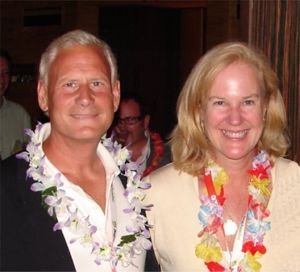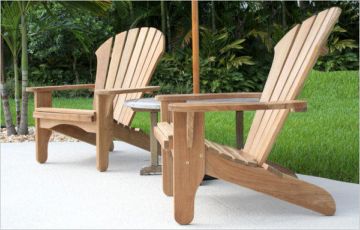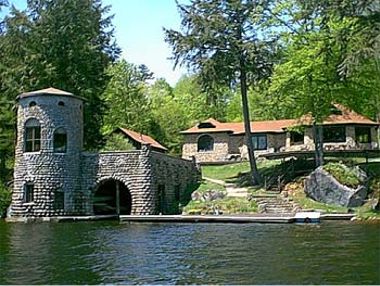
Cover
Story
April 2008
The Domain Giant You Didn’t Know:
Rob Grant's Roundabout Route to Real Estate Riches (Online
and Off!)
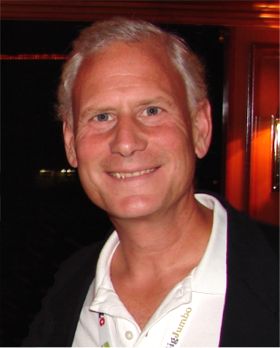
Rob Grant
With the explosion in domain values
in recent years Grant has been well rewarded for his prescience. So much so that
he has begun giving back through a series of generous domain donations (totaling
hundreds of thousands of dollars) to grateful educational institutions in the
U.S., including his alma mater, Arizona’s Prescott College.
There were
times in Grant’s life when the kind of philanthropy he practices today would have
seemed like the wildest kind of pipe dream. He had walked away from a dream job
on Madison Avenue so he could move to New York’s Adirondack Mountains,
even though there was no job waiting for him there. After the move, the company
he started wound up folding but like all great entrepreneurs, Grant bounced back
and bounced back big.
Some of that resiliency may have come from growing up with two rambunctious brothers. The three boys were born in a five year span starting in 1953 when Rob was the first to arrive. The family lived in Evanston, Illinois (suburban Chicago) at the time but soon moved to Memphis then on to Providence, Rhode Island as Rob’s dad climbed the corporate ladder, becoming a VP at one of the first business conglomerates, Textron.
|
Rhode Island's Narragansett Bay | Most of Grant’s formative years were spent living near Rhode Island’s Narragansett Bay where he developed a love of sailing (a love that played a big role in his first successful business that we will be talking about shortly). He would sometimes take off for days at a time, exploring the Atlantic Coast in a 25-foot sloop. Grant also developed an appreciation for nature and love of the outdoors during this time and that love would be a critical factor in the decision I mentioned earlier to walk away from a promising advertising career in New York City. |
Though he had an idyllic life in New England, Grant said he had grown a bit tired of “East Coast culture” finding it a little too pretentious for his tastes. When the time came to go off to college he zeroed in on a school on the other side of the continent. “I really wanted a change and I had never been out west so it had this romantic appeal to me. Prescott was also an experimental college that offered a brand new concept that allowed students to design their own courses and majors. It was something that really clicked with me – a chance to get out in the great wide open and explore the world in this unstructured academic environment,” Grant said.
| “Prescott also attracted a lot of rebellious, independent thinkers and it was a very exciting mix. We all knew we were part of something new and I just found it to be exhilarating,” Grant added. | |
| That
freedom to be as creative as he wanted to be would serve Grant well when he graduated
and went out on his own. With his degree in hand, Grant headed backed to Rhode Island and opened his own business – in fact two of them. One was a boat building company called Breton that manufactured 16-foot daysailers. The other was a restaurant in historic Newport, a joint venture with some friends. Breton leased and managed fleets of sailboats for local resorts that would in turn make them available for guests to rent. |
Classrooms at Prescott College |
While in that business an interesting twist of fate would send Grant off in an entirely new direction. In 1977 the America’s Cup yacht race would be coming to Newport and Grant knew the whole world would be watching – especially since the Cup would be defended by the Mouth of the South, media mogul Ted Turner (who would wind up winning as the skipper of Courageous). Grant got the idea to use the sails on his fleet of boats as huge billboards that would be impossible to miss when the TV cameras from around the world were trained on the local waters where the famous racing series would be staged.
“The concept was something that no one else had tried at the time,” Grant said. “I pitched the idea and was able land King William Scotch as our sponsor." Grant hired a handful of craftsmen to hand sew the giant highly detailed logos on the sails of more than a dozen boats.” The whole idea was kept as quiet as possible because Grant knew if the stodgy America’s Cup committee got wind of it, they would be horrified and do anything they could to keep Grant’s boats out of camera range.
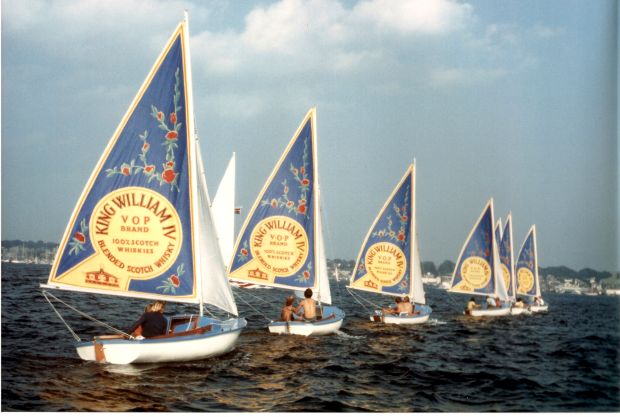
Rob
Grant's King William Scotch flotilla at the 1977 America's Cup - Newport, RI
“The
day of the race we towed the boats out to the entrance of Newport Harbor. Moments
later hundreds of press boats from around the world headed our way and up went
our King William Scotch sails! It was a gorgeous day and the sails were just beautiful
as we cruised in formation right through the press fleet. You could literally
hear the motor drives on their cameras whirring away because they had never seen
anything like this at the America’s Cup before,” Grant recalled fondly. “Instantaneously
we wound up in about 150 publications worldwide including Newsweek
who ran a big story on this.”
The scotch company was understandably delighted with the worldwide exposure they got for around $40,000 and that successful gambit opened the door for Grant to start an entirely new company called Creative Sail. “You never know where something is going to lead,” Grant said. “You start with one idea and it morphs very quickly into another. The whole point of this is that you have to remain very opportunistic and very unstructured in your thinking. I think that is the hallmark of anyone who is successful - they are very good at turning on a dime when necessary and that is what I have tried to do throughout my career.”
| In fact
soon after this success with sailboat advertising, Grant decided to turn on a
dime again and head for New York City to see if he could parlay his marketing
skills into a career on Madison Avenue. He set up shop in what he called an incredibly
seedy hotel on the West Side where he hooked up with aspiring art directors that
helped him produce a portfolio of storyboards to take around to the different
agencies to see if one would like what they saw and give him a chance. “It was a very grueling process but finally someone at Grey Advertising sent my portfolio up to their new Creative Director |
|
| Billy Giles (a major figure on Madison Avenue at the time) who thought Grant had real potential. He called Rob into his office and after a short interview asked him is he could start the next day. “I was stunned. I had been looking for so long I didn’t really expect to hear anyone say yes,” Grant said. But Giles did and Rob’s foot was in the door. | |
Even
though he started out with a desk in the hallway with the secretaries, Grant was
ecstatic just to be there, especially since Grey was one of the world’s top ad
agencies. His first big break came when he was on one of several creative teams
that were given an assignment to come up with a slogan for the Playtex company
describing a new bra that broke new ground in terms of comfort for the women who
wore them.
Grant, intent on making a name for himself, stayed up until the wee hours almost every night trying to come up with something. Grey told the writers to concentrate on the word “fit” (just as domainers would concentrate on keywords when they came on the scene some 15 years after this). Among the words and phrases Grant scribbled was TGIF but his translation for the famous acronym was “Thank Goodness it Fits”. “I looked at it and said That’s It! I knew it was going to be huge,” Grant said. When he showed it to the Creative Director the next morning a big smile crossed his bosses’ face. Playtex loved it too and Grant’s idea appeared in all of their ads. The campaign was very successful and Grant was soon ushered into his own office as a reward.
|
Rob
& Pat Grant | He
was soon working on other major accounts including Proctor & Gamble,
Northwest Orient and STP (which resulted in Grant working directly
with legendary NASCAR driver Richard Petty who was the company’s
spokesman). Grant went on to win several major advertising awards including The
President's Award for Outstanding Creative Achievement in 1982 for the Northwest
Airlines campaign and a variety of awards for television including one for
an Izod Lacoste campaign. In addition to his status as a highly respected copywriter, Grey brought Grant something even better. He met a bright young account executive there named Pat and they soon fell in love and were married. However Grant found there was also a downside to his occupation. Advertisers doled out multi-million dollar accounts |
| based on how well they liked the ideas coming out of the different agencies. Landing one big account could make or break a company. “It was a very intense period. I literally worked day and night,” Grant recalled. | |
After
six years in a very high pressure job burn out started to set in just as
Rob and Pat had their first child, Elizabeth (Caroline and Charlie
followed over the next few years to round out the family). With a family to think
about now, they decided to pull up stakes and make a radical change in
their lifestyle by moving upstate to the mountains. All of their friends thought
they were crazy and warned them that if they walked away from their jobs
they would never be able to come back. Grant said, “even so I looked at my life
and thought if I stayed in Manhattan and raised a family it would be enormously
expensive and we would have to live in an apartment out in the suburbs. It just
turned my stomach to think that I could spend the rest of my life going back and
forth to the city on a commuter train.”
“I also thought here I am, expending all of this creative energy to make money for other companies – why can’t I do this for myself? I had this tremendous urge to channel all of this energy into something that would be mine. So we made the move and headed for the Adirondacks. We rented a house up there but didn’t have a clue what we were going to do! It was a very scary time,” Grant said.
| He finally decided to start an Adirondack furniture company in Saranac Lake (Adirondack furniture is a popular style of casual outdoor camp furniture that originated in that region). “The idea was to take something that had always been a cottage industry and market it on a national scale,” Grant said. The furniture company started hiring local craftsman and their high quality hand made pieces were soon in high demand. In fact a big Christmas order from Saks Fifth Avenue resulted in Grant personally filling up a U-Haul trailer to take a load of his furniture back to New York City where the pieces were displayed in Saks’ windows. |
Adirondack chairs |
Grant
targeted the design trade and gained strong acceptance in the high end market.
The problem was he couldn’t find enough qualified reliable craftsman to produce
enough pieces to meet the demand. If it was deer season most of his workers simply
disappeared! Eventually he came to grips with the fact that this was a cottage
industry that wasn’t scaleable and decided it was once again time to try something
new.
Grant
had actually already taken the first steps on another path while the furniture
company was still going. “I was beginning to buy real estate because I felt there
was a great opportunity in these mountain resorts where I thought property was
grossly undervalued. I began to buy old commercial buildings in Saranac Lake and
residential property in Lake Placid. I remember buying an old 3-story commercial
building for just $20,000! I got seriously involved in rehabbing these
buildings and then turning around and selling them.”
“We happened to get lucky because we hit that market just as the Adirondacks were starting to be rediscovered,” Grant said. “People were starting to come up from New York, New Jersey and Boston and I found I was able to sell the residential properties for two and three times what I paid for them. That kind of ushered in my real estate era.”
|
Camp
Cobblestone | Real estate was an area is which Grant really thrived. “Around 1991 I decided to start a brokerage firm,” he said. “but in 1991 we wound up entering one of the worst recessions in history, one that went on for two or three years. I remember thinking my timing could not have been worse.” Still Grant managed to hang on and slowly built a reputation during those lean years, especially when he won listings for local waterfront camps (properties that could sell for $1-$5 million). His marketing background came in handy because it allowed him to develop marketing plans for property owners that other brokers couldn’t do as well. That was the birth of today’s powerful Rob Grant & Associate Real Estate firm. |
As
the economy started growing again, Grant’s business boomed. At this same
time, in 1995-96, Grant became aware of the Internet and domains. “That was a
remarkable awakening for me because I had the Madison Avenue marketing
background and I had the real estate background and suddenly these two powerful
thing merged. I looked at a domain and thought My God, not only is this a
brand as the Internet develops, but it is also has all of the properties of real
estate,” Grant said.
| Coming Up on Page 2
|
|
